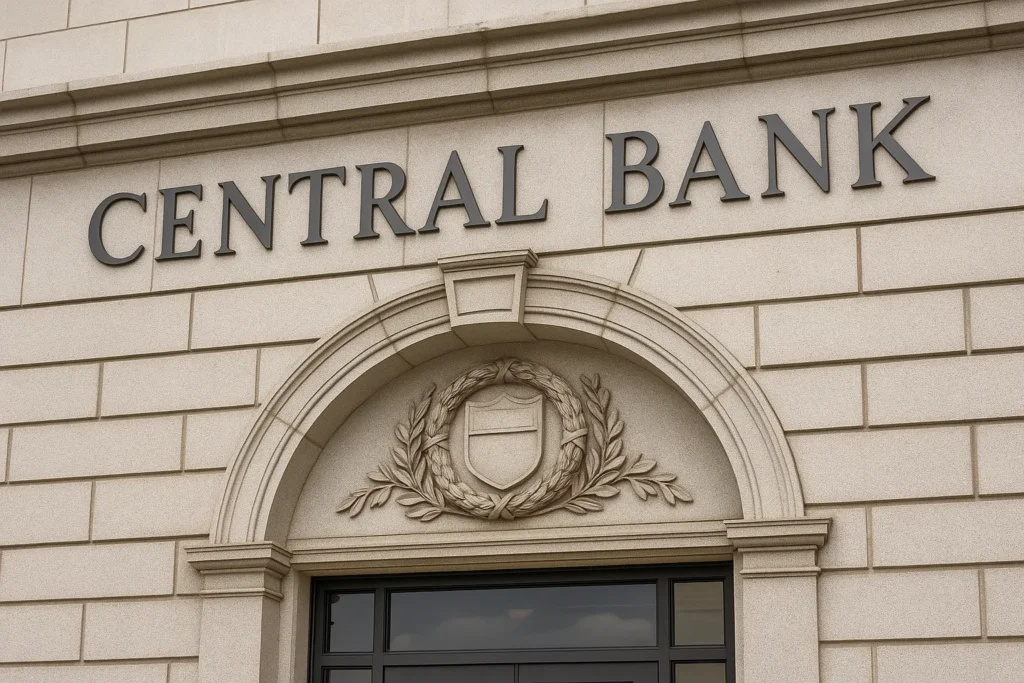Ever wondered why your mortgage payments fluctuate or why businesses seem to boom and bust in cycles? The answer often lies in something seemingly simple how interest rates shape the economy.
Interest rates are more than just numbers; they are powerful levers that influence everything from consumer spending to business investments and even global trade. Understanding how they work is crucial for navigating the complex world of finance.
In this article, we’ll break down the intricate relationship between interest rates and the economy. We’ll explore how central banks use them, the impact on various sectors, and what it all means for your wallet.
Understanding Interest Rates
Interest rates are essentially the cost of borrowing money. They are expressed as a percentage of the principal amount. Think of it as the price you pay to use someone else’s money.
They are a critical tool used by central banks to manage inflation and stimulate economic growth.
What are Interest Rates?
Interest rates represent the charge a lender imposes on a borrower for the use of assets. These assets can come in various forms, such as cash, consumer goods, or property. Lenders benefit from interest because it compensates them for several factors.
These factors include the risk of default by the borrower, the opportunity cost of not using the assets themselves, and inflation. The interest rate is typically expressed as an annual percentage.
Factors Influencing Interest Rates
Several factors influence interest rates, making them a dynamic economic indicator.
- Central Bank Policies: Central banks, like the Federal Reserve in the U.S., set benchmark rates that influence borrowing costs across the economy.
- Inflation: Higher inflation generally leads to higher interest rates as lenders demand more compensation for the decreasing purchasing power of money.
- Economic Growth: Strong economic growth can lead to higher interest rates as demand for borrowing increases.
- Government Debt: High levels of government debt can push interest rates higher as the government competes with other borrowers for funds.
- Market Expectations: Expectations about future economic conditions and central bank actions can also influence current interest rates.
Different Types of Interest Rates
Interest rates come in various forms, each serving different purposes and impacting different sectors of the economy.
- Prime Rate: This is the interest rate that banks charge their most creditworthy customers. It serves as a benchmark for other lending rates.
- Federal Funds Rate: In the United States, this is the target rate set by the Federal Reserve for the overnight lending of reserves between banks.
- Mortgage Rates: These are the interest rates on home loans and can be fixed or adjustable.
- Credit Card Interest Rates: These are typically higher than other rates due to the unsecured nature of the debt.
- Savings Account Interest Rates: The interest rate paid by banks on savings accounts.
- Corporate Bond Yields: The return an investor receives from holding corporate bonds, reflecting the risk associated with the company.
The Role of Central Banks

Central banks are the guardians of monetary policy. They use interest rates as a primary tool to steer the economy.
By adjusting these rates, they aim to maintain price stability and promote full employment.
How Central Banks Use Interest Rates
Central banks manipulate interest rates to influence borrowing costs across the economy. Lowering rates encourages borrowing and spending, stimulating growth. Raising rates does the opposite, helping to curb inflation.
- Lowering Interest Rates: When the economy is slowing down, central banks might lower interest rates. This makes it cheaper for businesses and consumers to borrow money. Businesses can invest in new projects, and consumers can make larger purchases like homes or cars. This increased spending boosts economic activity.
- Raising Interest Rates: When inflation is rising too quickly, central banks might raise interest rates. This makes borrowing more expensive. Businesses and consumers are less likely to borrow and spend, which helps to cool down the economy and reduce inflationary pressures.
Impact on Inflation and Economic Growth
The impact of interest rate changes on inflation and economic growth is significant.
- Controlling Inflation: Higher interest rates reduce spending and investment, which can help to lower inflation. This is because there is less demand for goods and services, so prices stabilize or decrease.
- Stimulating Growth: Lower interest rates encourage borrowing and spending, leading to increased economic activity and growth. Businesses expand, hire more workers, and consumers spend more, all contributing to a stronger economy.
Examples of Central Bank Actions
Throughout history, central banks have taken various actions to manage their economies.
- The Federal Reserve (U.S.): During the 2008 financial crisis, the Federal Reserve lowered interest rates to near zero to stimulate the economy. They also implemented quantitative easing, buying government bonds to inject liquidity into the market.
- The European Central Bank (ECB): In response to the Eurozone debt crisis, the ECB lowered interest rates and provided long-term loans to banks to encourage lending and support economic recovery.
- The Bank of Japan (BOJ): The BOJ has maintained near-zero or negative interest rates for many years to combat deflation and stimulate economic growth. They have also used quantitative easing and yield curve control to manage inflation and economic activity.
Impact on Consumers
Interest rates directly affect consumers in various ways, influencing their spending habits and financial decisions.
From mortgages to credit cards, understanding these impacts is crucial for personal financial planning.
Mortgages and Home Buying
Mortgage rates are directly tied to prevailing interest rates. Lower rates make home buying more affordable, while higher rates can make it more expensive.
- Lower Mortgage Rates: These can significantly reduce monthly payments, making homeownership more accessible. They also encourage refinancing, allowing homeowners to lower their existing payments.
- Higher Mortgage Rates: These increase the cost of buying a home and can cool down the housing market. They also reduce the incentive to refinance existing mortgages.
Credit Cards and Loans

Interest rates on credit cards and personal loans are also influenced by the overall interest rate environment.
- Lower Credit Card Rates: These can make borrowing more affordable, but they can also encourage overspending.
- Higher Credit Card Rates: These increase the cost of carrying a balance on credit cards, making it more expensive to borrow.
Savings and Investments
Interest rates affect the returns on savings accounts and investments.
- Higher Savings Rates: These provide a greater return on savings, encouraging people to save more.
- Lower Savings Rates: These reduce the incentive to save, as the returns are lower.
Impact on Businesses
Businesses are also significantly affected by interest rates. These rates influence their investment decisions, borrowing costs, and overall profitability.
Investment Decisions
Lower interest rates make it cheaper for businesses to borrow money, encouraging investment in new projects and expansion.
- Increased Investment: Lower borrowing costs can lead to increased investment in new equipment, facilities, and technology.
- Reduced Investment: Higher borrowing costs can deter businesses from investing, leading to slower growth.
Borrowing Costs
The cost of borrowing money directly impacts a company’s profitability. Lower rates reduce expenses, while higher rates increase them.
- Lower Borrowing Costs: These can improve a company’s bottom line, freeing up capital for other investments.
- Higher Borrowing Costs: These can squeeze profits and make it more difficult for businesses to grow.
Overall Profitability
Interest rates can affect a company’s overall profitability by influencing both revenue and expenses.
- Positive Impact: Lower rates can stimulate demand for a company’s products or services, increasing revenue.
- Negative Impact: Higher rates can reduce demand and increase borrowing costs, negatively impacting profitability.
Impact on the Stock Market
The stock market is highly sensitive to changes in interest rates. Investors closely watch these rates as they can significantly impact stock valuations and market sentiment.
Bond Yields vs. Stock Returns
When interest rates rise, bond yields typically increase, making bonds a more attractive investment compared to stocks.
- Increased Bond Yields: These can lead investors to shift their investments from stocks to bonds, putting downward pressure on stock prices.
- Decreased Bond Yields: These can make stocks more attractive relative to bonds, potentially driving stock prices higher.
Impact on Company Valuations
Higher interest rates can negatively impact company valuations by increasing the discount rate used to calculate the present value of future earnings.
- Lower Valuations: Higher discount rates result in lower present values, reducing the attractiveness of stocks.
- Higher Valuations: Lower discount rates result in higher present values, increasing the attractiveness of stocks.
Market Sentiment
Changes in interest rates can also affect market sentiment, influencing investor confidence and risk appetite.
- Positive Sentiment: Lower rates can boost investor confidence, leading to increased risk-taking and higher stock prices.
- Negative Sentiment: Higher rates can dampen investor confidence, leading to decreased risk-taking and lower stock prices.
Impact on International Trade
Interest rates also play a significant role in international trade by influencing exchange rates and the flow of capital between countries.
Exchange Rates
Changes in interest rates can affect a country’s exchange rate, making its exports more or less competitive.
- Higher Interest Rates: These can attract foreign investment, increasing demand for the country’s currency and causing it to appreciate.
- Lower Interest Rates: These can discourage foreign investment, decreasing demand for the country’s currency and causing it to depreciate.
Capital Flows
Interest rate differentials between countries can drive capital flows, affecting investment and economic growth.
- Inflow of Capital: Higher interest rates can attract capital from other countries, boosting investment and economic growth.
- Outflow of Capital: Lower interest rates can lead to capital flight, reducing investment and slowing economic growth.
Trade Balance
Exchange rate changes driven by interest rate differentials can affect a country’s trade balance, influencing exports and imports.
- Improved Trade Balance: A weaker currency can make a country’s exports more competitive, improving its trade balance.
- Worsened Trade Balance: A stronger currency can make a country’s exports less competitive, worsening its trade balance.
The Phillips Curve
The Phillips Curve is an economic model that illustrates the inverse relationship between inflation and unemployment. Understanding this concept helps to contextualize the impact of interest rate policies.
The Inverse Relationship
The Phillips Curve suggests that as unemployment decreases, inflation tends to increase, and vice versa.
- Low Unemployment: A tight labor market can lead to wage increases, which can then drive up prices and cause inflation.
- High Unemployment: A slack labor market can lead to wage stagnation or decreases, which can help to keep inflation in check.
Limitations of the Phillips Curve
While the Phillips Curve provides a useful framework for understanding the relationship between inflation and unemployment, it has its limitations.
- Short-Term vs. Long-Term: The relationship may hold in the short term but can break down over longer periods due to factors like supply shocks or changes in inflationary expectations.
- Stagflation: The phenomenon of stagflation, where both inflation and unemployment are high, challenges the traditional Phillips Curve relationship.
Relevance to Interest Rate Policy
Central banks often consider the Phillips Curve when making interest rate decisions, aiming to balance the goals of full employment and price stability.
- Balancing Act: Central banks must carefully weigh the risks of inflation and unemployment when setting interest rates, considering the potential trade-offs suggested by the Phillips Curve.
- Policy Implications: Understanding the Phillips Curve helps policymakers to make informed decisions about interest rate policy, taking into account the potential impact on both inflation and employment.
Conclusion
Understanding how interest rates shape the economy is crucial for making informed financial decisions and comprehending broader economic trends. Interest rates influence everything from consumer spending and business investments to inflation and international trade. Central banks use them as a primary tool to manage economic stability, and their impact is felt across various sectors.
By grasping the fundamentals of interest rates, you can better navigate the complexities of the financial world and make sound choices for your future. What are your thoughts on the current interest rate environment? Share your experiences and insights in the comments below!